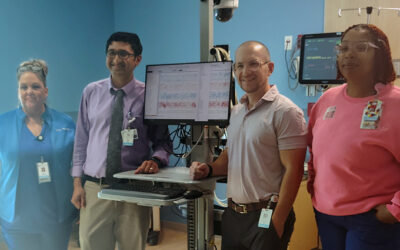What is Prediabetes?
If a person’s blood sugar levels are higher than they normally are but not quite high enough to be diagnosed as Type 2 diabetes, this is known as prediabetes. Insulin is a hormone produced by the pancreas to help the body’s cells use blood sugar for energy, or by your body’s inability to generate enough insulin to keep your blood sugar level at a healthy level.
When the body’s cells don’t respond normally to insulin, the pancreas tries to produce more insulin, but eventually, the pancreas can’t keep up. This causes the blood sugar to remain high and sets the stage for prediabetes.
Prediabetes is a serious disease. If you have prediabetes, you are more likely to develop Type 2 diabetes, heart disease and stroke.
Risk Factors for Prediabetes
According to the Centers for Disease Control and Prevention, one out of every three Americans has prediabetes and because there often aren’t any signs or symptoms, 84% don’t know they have it. Though, some people may develop darkened skin in their armpits or on their back and side of the neck. They may also have small skin growths in these areas.
Because of the lack of warning signs, it’s important to know the risk factors of having prediabetes. These include:
- Having weight issues, such as obesity or being overweight
- Having an immediate family member with diabetes
- Being a member of a high-risk ethnic group that is prone to diabetes (which includes Latin Americans, African Americans, Native Americans and Asian Americans)
- Being physically inactive (less than three days of exercise a week)
- Having polycystic ovarian syndrome
- Ever having gestational diabetes (diabetes that can develop when a woman is pregnant)
- Being older than 44
- Having other health conditions (high cholesterol or blood pressure)
If you have any of these risk factors, be sure to talk to your doctor about getting tested for prediabetes.
Prediabetes is Your Chance to Prevent Diabetes
If you’ve been diagnosed with prediabetes, take it as your sign to make lifestyle changes to delay or prevent Type 2 diabetes. It’s even possible to reverse prediabetes, according to the Centers for Disease Control and Prevention. Some preventive measures you can make are:
- Lose weight
- Exercise regularly (at least 150 minutes of moderate exercise a week)
- Stop smoking
- Maintain a diet rich in fiber, fruits and vegetables
“Often the progression of prediabetes to diabetes can be prevented by losing weight and then maintaining a normal weight,” says Dr. Resham Poudel, endocrinologist with St. Francis Medical Group. “This can be achieved by eating a diet with less fat, less calories and less carbohydrates combined with regular exercise. Medication such as metformin can also be used in high-risk individuals to prevent the progression of disease. However, weight loss is the key.”
Talk to your primary care provider (PCP) about what is right for you.




